Peelin’ Good: The Wild World of Peruvian Potato Varieties
Monday February 27, 2023 | Culture | Posted by Team About Cusco
Potatoes are native to Peru and were cultivated around 7000 years ago. The potato is a staple crop in Peruvian cuisine and culture. Its history in the region stretches back thousands of years. Before the arrival of the Spaniards in the 16th century, potatoes were already being cultivated in Peru by the Inca civilization; there were hundreds of varieties of potatoes growing in the Andean mountains around Cusco and elsewhere in Peru. Nowadays, there are more than 4000 varieties of potatoes in Peru of forms, colors, and flavors, and they provide nutritional values rich in carbohydrates, magnesium, potassium, and fiber. Learn more about Peruvian Potatoes.
Potatoes played a significant role in the Inca diet, as they provided a reliable source of sustenance in the Cusco region where other crops could not grow. The potato was one of the three principal staple foods of the Incas in Cusco and essential for feeding the Spanish conquerors, along with corn and quinoa. The Inca people also held potatoes in high regard, considering them a sacred food that was said to have healing properties. Potatoes were often used in religious ceremonies and were even mummified along with important leaders and rulers.
When the Spaniards arrived in Peru in the 16th century, they initially regarded potatoes with suspicion. They considered them to be a food fit only for animals. However, they soon realized the potato’s value as a sustenance source. As a result, they began cultivating it on a larger scale. Over time, potatoes became a vital part of the Spanish colonial diet, and their cultivation spread throughout South America.
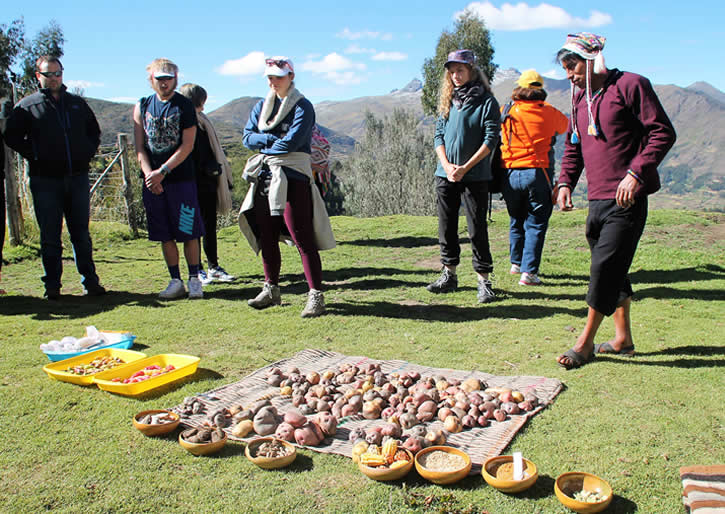
Different Varieties Peruvian Potatoes
Today, Peru is home to over 3,000 varieties of potatoes, each with their own unique flavor, texture, and color. Some of the most popular varieties include the yellow papa amarilla, the purple papa morada, black potatoe, and the white papa, la papa blanca. When you go to the market in Cusco, you’ll be surprised by the many different forms and colors of potatoes. Potatoes are grown in other regions of Peru, with some varieties specific to certain areas.
The papa amarilla (the yellow potato) is primarily grown in the Andean highlands of Peru, at an altitude between 2800m and 3800m above sea level while the papa morada is found in the central highlands.
Yellow Potatoes or Papas Amarillas have to be cooked carefully, otherwise, they burst open and fall apart. Best vapor them for 15-20 minutes. Once cooked, Papas Amarillas are very soft and grainy, and they are great for preparing mashed potatoes or the popular Peruvian starter “Causa Limeña“. You can also use them for thick Peruvian French fries or as an ingredient in Peruvian stews.
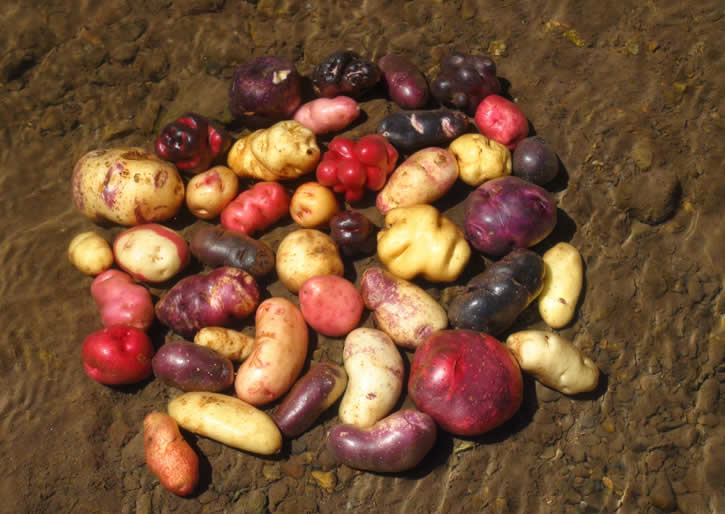
The papa blanca, or white potato, is grown in the coastal regions of Peru, where the climate is warmer and drier. Black Potatoes are also known under the name Papa Mariva or Papa Tomasa Negra. The skin is dark brown to black, the inside yellowish. The Papa Negra is floury, slightly sweet with a pleasant taste, and can be used in almost all Peruvian dishes: stews, soups, boiled, fried, or mashed.
Learn more about peruvian potatoes.
What is chuño?
In the high Andes and in Cusco, you will also chuño, which is a freeze-dried potato that is used as a staple food during the winter months. Chuño was made by the Quechua people back in pre-Inca times. After the harvest, small potatoes are selected and spread on flat ground. They are left in the open and freeze at night with the low temperatures of the Andes. During the day, they are exposed to the sun and trampled on by foot to extract the last remaining water in them and remove the skin. The total process takes 3 to 5 days. Once dried, Chuño is easy to store for approximately a year without losing nutritional value. Chuño and chuño flour is used in many Peruvian dishes and dessert of the Andes cuisine.
Potatoes are a key ingredient in many traditional Peruvian dishes, including papa a la huancaína, a dish of boiled potatoes topped with a spicy cheese sauce, and causa rellena, a layered dish of mashed potatoes and seafood or chicken. Another popular dish is papa rellena, which is a mashed potato ball stuffed with ground beef, onions, and spices, and then deep-fried. Potatoes are also used to make a variety of traditional Peruvian snacks, including papas fritas, French fries, and chiles, which are thinly sliced and fried potato chips.
The Potato Park the Sacred Valley
In the highlands of Pisac in the Sacred Valley, near Paru Paru, you can find the Parque de la Papa. The Potato Park is a Biocultural Territory dedicated to the conservation of biological and cultural diversity in the Andean mountains of this region in Cusco. The Park is managed by the five indigenous communities of Amaru, Chawaytire, Pampallacta, Paru Paru, and Sacaca, with the support of the Association for Nature and Sustainable Development, ANDES.
Some travel agencies in Cusco can organize a (private) tour to the Potato Park, where you will learn about peruvian potatoes, the cultivation system, conservation work, storage and distribution, and tasting of the variety of native potatoes, other native plants, and medical plants. Visitors are invited to experience the Potato Park through its biocultural tourism program. The visits can be organized around five major themes: agroecology, the culinary sanctuary, trekking, crafts, and natural products. Horizontal learning programs can also be organized for various participating groups on topics such as biocultural heritage territories, food security, traditional knowledge, and resilience in the face of climate change. Programs are flexible and can be tailored to the specific interests of visitors. A visit to the local families in Amaru can be part of the program, where you can spend time with the families in the community and join the meals. There is also time for hiking and visiting the beautiful lakes Azulqocha, Kinsaqocha, and Punaqocho. Ecotourism provides a significant source of income for the communities of the Potato Park.
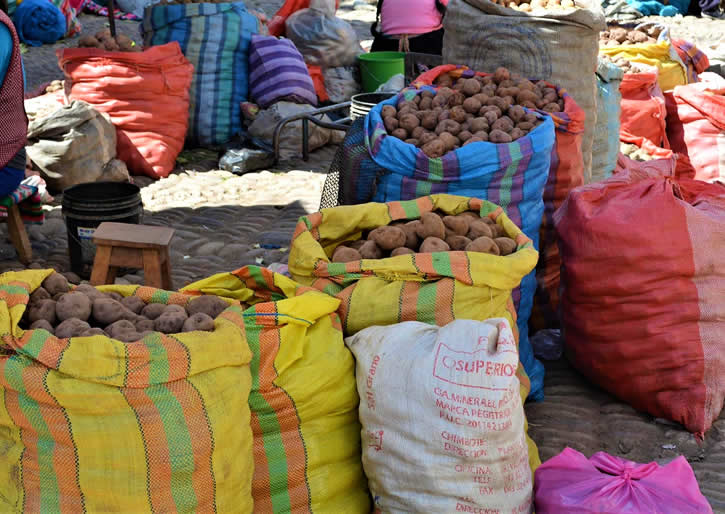
Day of the Potato
In addition to being an important part of the Peruvian diet, potatoes also have significant cultural and economic importance in the region. Every year, Peruvians celebrate the Day of the Potato on May 30 or Día de la Papa, which is a national holiday that recognizes the role of the potato in Peruvian culture and cuisine and teaches more about Peruvian potatoes.
Export Peruvian potatoes
Potatoes are also an important export for Peru, with the country being one of the largest potato producers in the world. In recent years, there has been a growing interest in heirloom potato varieties in Peru, with some farmers working to preserve and cultivate rare and endangered varieties of potatoes.
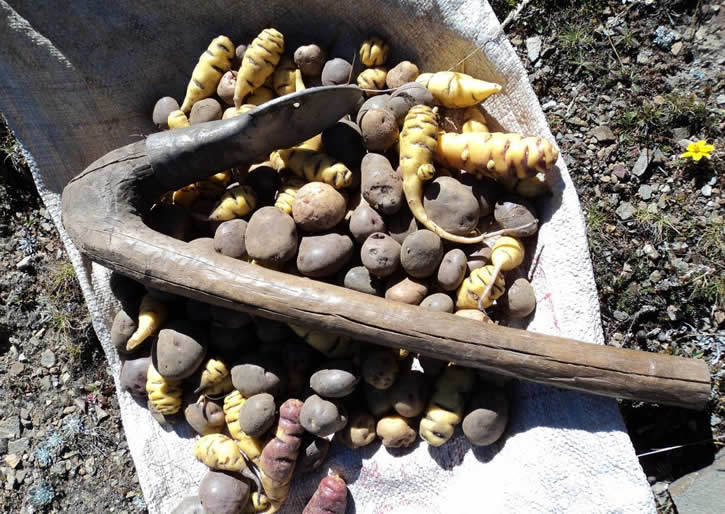
Challenges
Despite its long history and cultural importance in Peru, the potato faces a number of challenges today, including climate change and the erosion of traditional agricultural practices. However, efforts are underway to preserve and protect Peru’s rich potato heritage, and the potato remains an important part of the country’s identity and cuisine.
The history of the potato in Peru is a testament to the resilience and adaptability of this important crop. From its origins with the Inca civilization to its cultivation and spread throughout South America by the Spaniards, the potato has played a significant role in the region’s culture, economy, and cuisine. Potatoes in Peru are also used for holistic remedies and medicines as they are said to have medicinal properties for relieving headaches and treating skin irritation. They have also been used as an anti-aging tool in skin care. And, of course, potatoes can be used to make compounds like flour and alcohol.
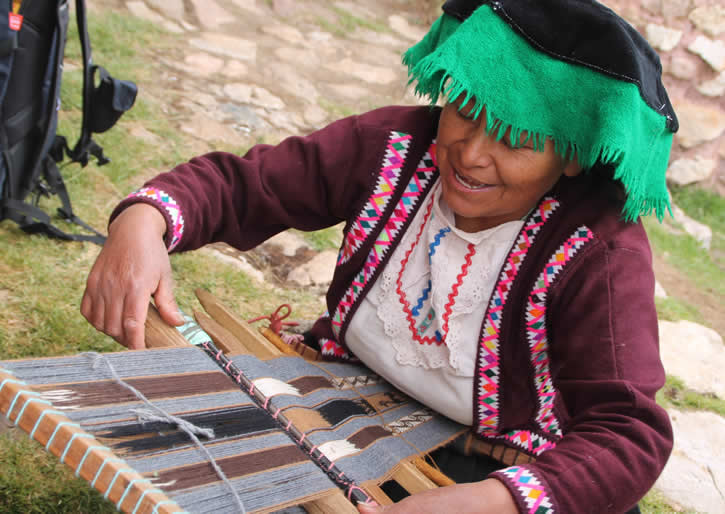
Restaurant Mil in the Sacred Valley of the Incas.
You’ll find excellent Peruvian dishes, including different types of potatoes, all over Cusco and elsewhere in Peru. If you’re looking for something really special and have some USD extra to spent, go to restaurant MIL in the Sacred Valley nearby Chicheros and Moray. MIL was founded by the famous Peruvian chef Virgilio Martínez, owner of one of the world’s best-rated restaurants ‘Central’, in Lima. Eating at MIL is a complete gastronomic experience. They offer a tasting menu that consists of 8 plates/ecosystems made with products found in the environment surrounding Mil.
The team works with the surrounding indigenous communities, researching and developing new varieties of crops. Even the water is local, collected from Andean snowmelt, while the celebrated Maras pink salt is sourced from nearby ancient terraces. The focus is on vegetables, tubers, and grains,’ says Martínez.) ‘There isn’t much protein apart from alpaca and llama. As Martínes says: “Mil isn’t just a restaurant; it’s a laboratory that looks at Peruvian culture, produces, and identity.” All of the ingredients of the 8-course meal reflect the crops that grow in eight Andean ecosystems. Many offerings feature innovative uses of hyper-local potato varieties.
Travelling in Peru, in the Cusco region?
Check out recommended Tours and Activities in Cusco here.
For a visit to the Potato Park, feel free to contact About Cusco.
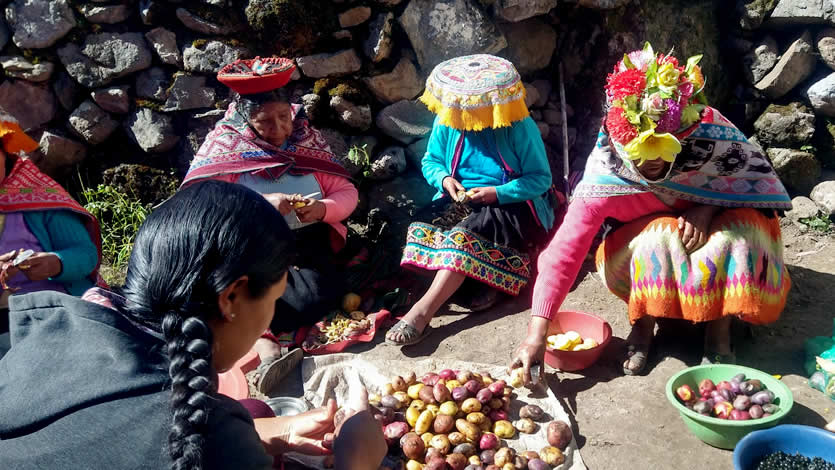
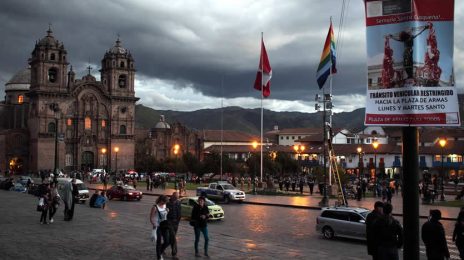
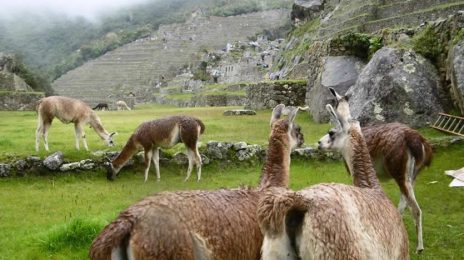
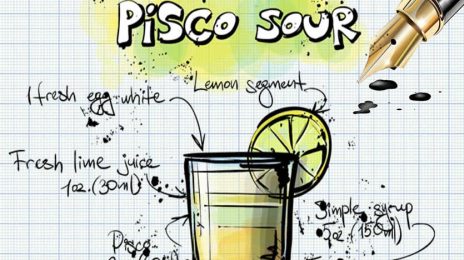
Leave a Reply